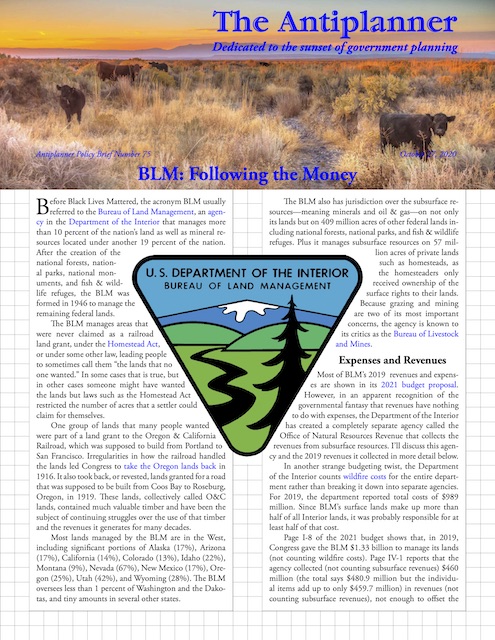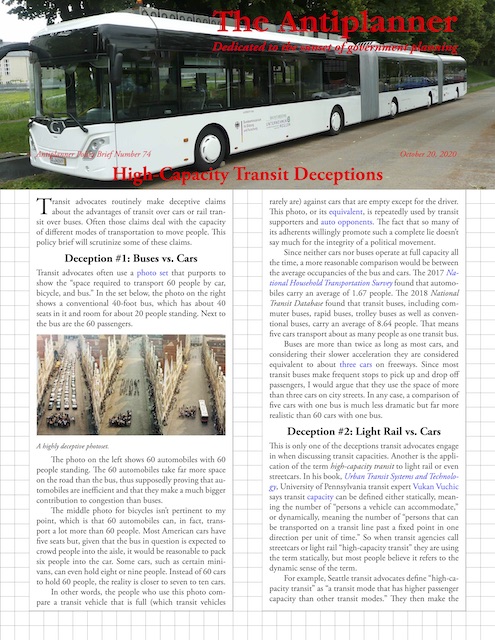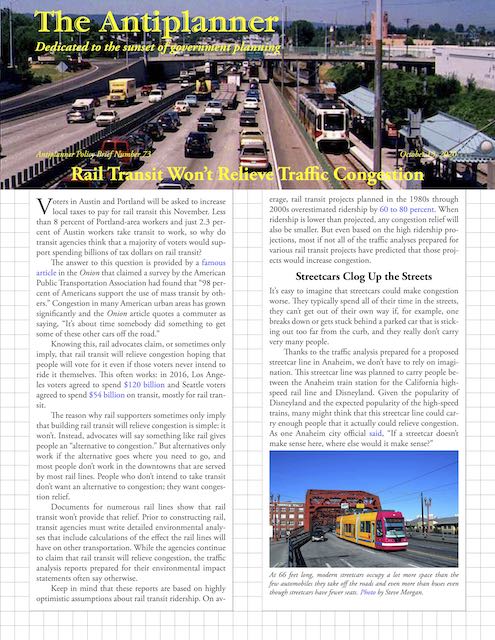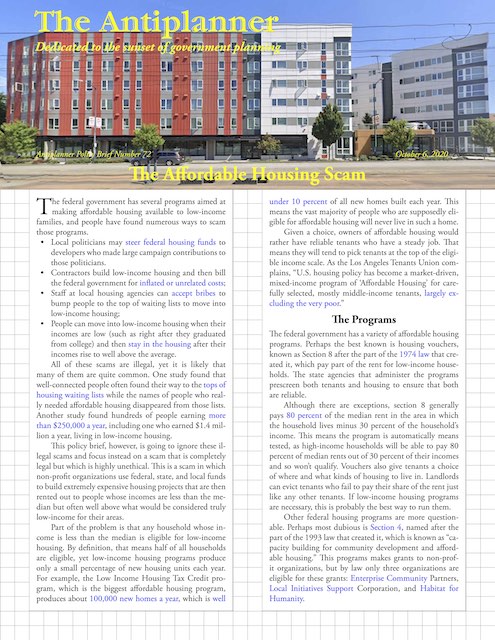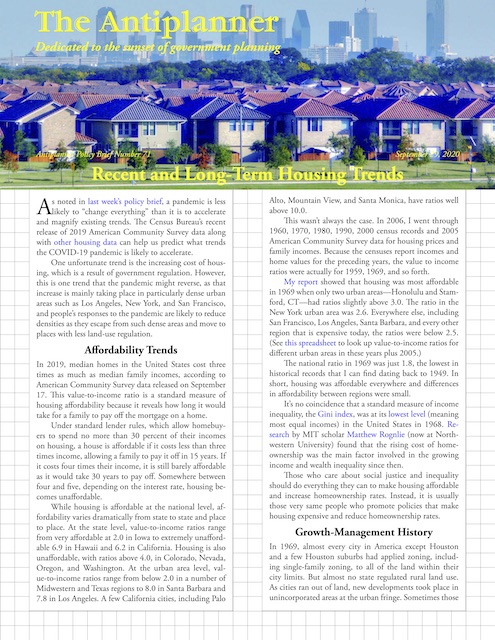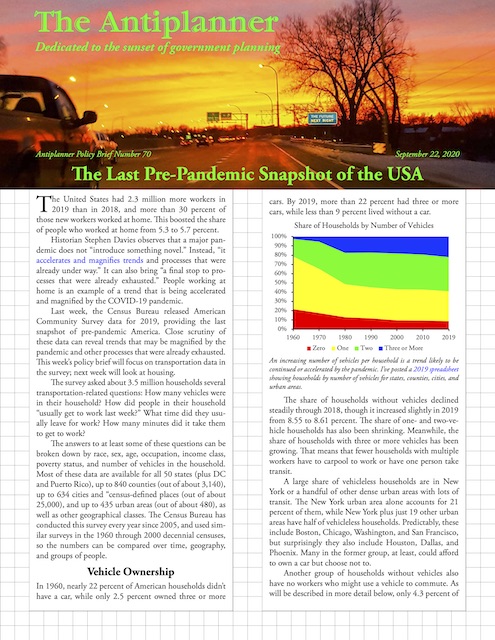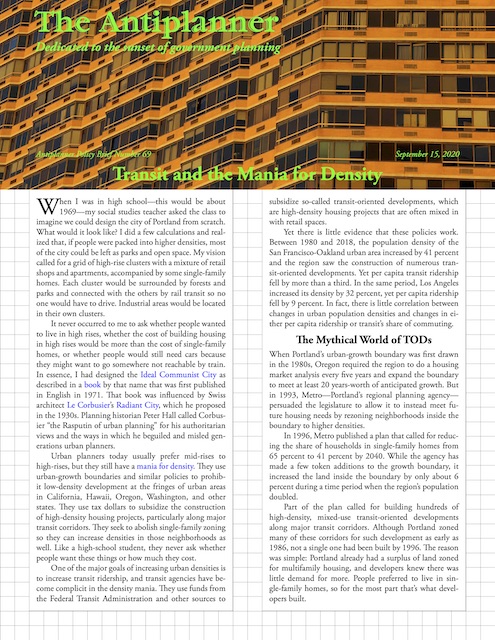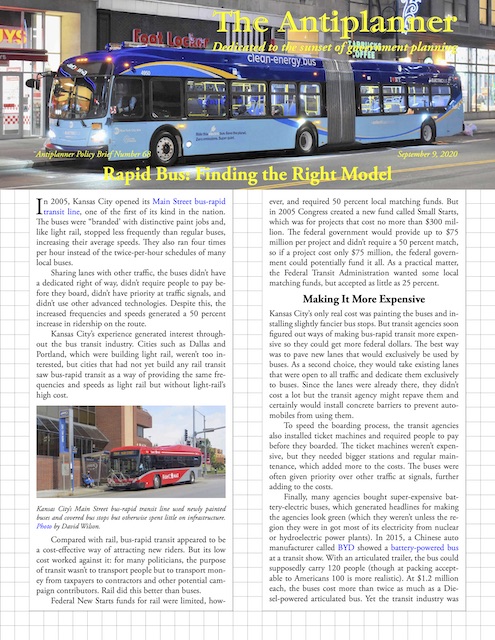The nation’s transit industry carried 19 million more trips in 2019 than in 2018, representing a 0.2 percent increase in ridership, according to the 2019 National Transit Database that was posted by the Federal Transit Administration last week. To get that increase, transit agencies had to spend 5 percent more on operating costs and increased capital spending by more than 10 percent.
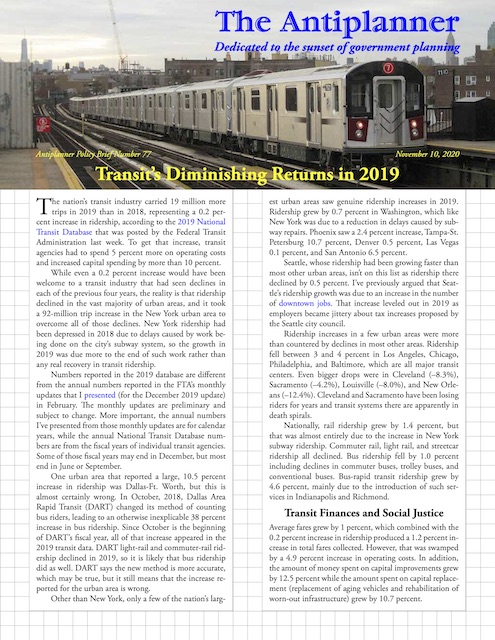 Click image to download a four-page PDF of this policy brief.
Click image to download a four-page PDF of this policy brief.
While even a 0.2 percent increase would have been welcome to a transit industry that had seen declines in each of the previous four years, the reality is that ridership declined in the vast majority of urban areas, and it took a 92-million trip increase in the New York urban area to overcome all of those declines. New York ridership had been depressed in 2018 due to delays caused by work being done on the city’s subway system, so the growth in 2019 was due more to the end of such work rather than any real recovery in transit ridership. Continue reading

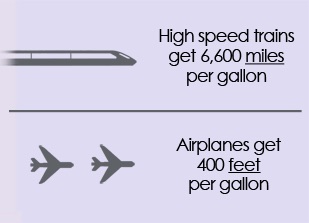 US HSR’s claim that high-speed trains can go 6,600 miles on one gallon of fuel is absurd, and its claim that airliners can only go 400 feet on one gallon is also wrong.
US HSR’s claim that high-speed trains can go 6,600 miles on one gallon of fuel is absurd, and its claim that airliners can only go 400 feet on one gallon is also wrong. 